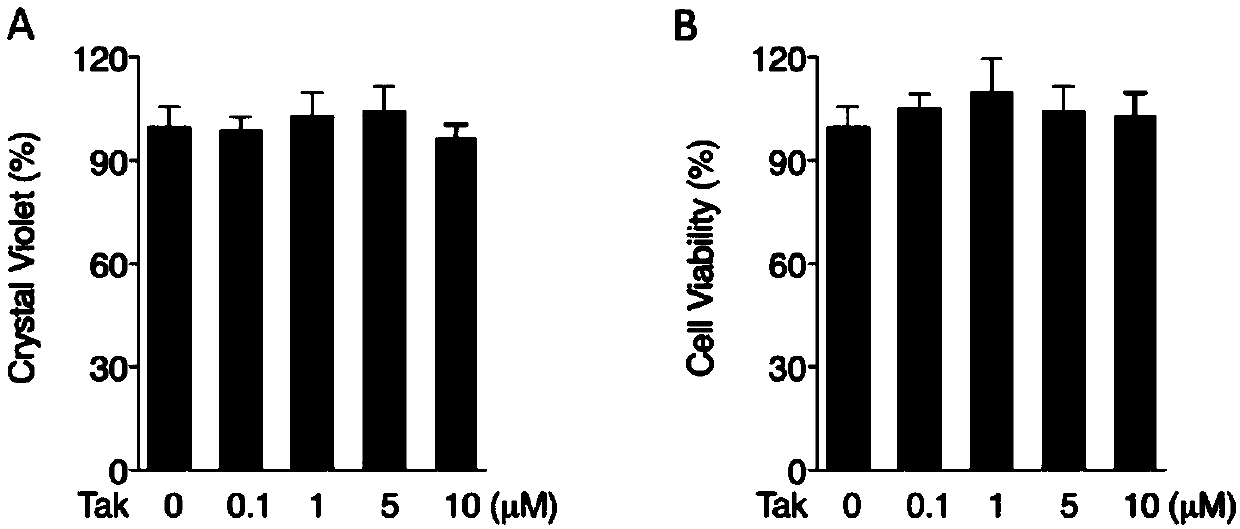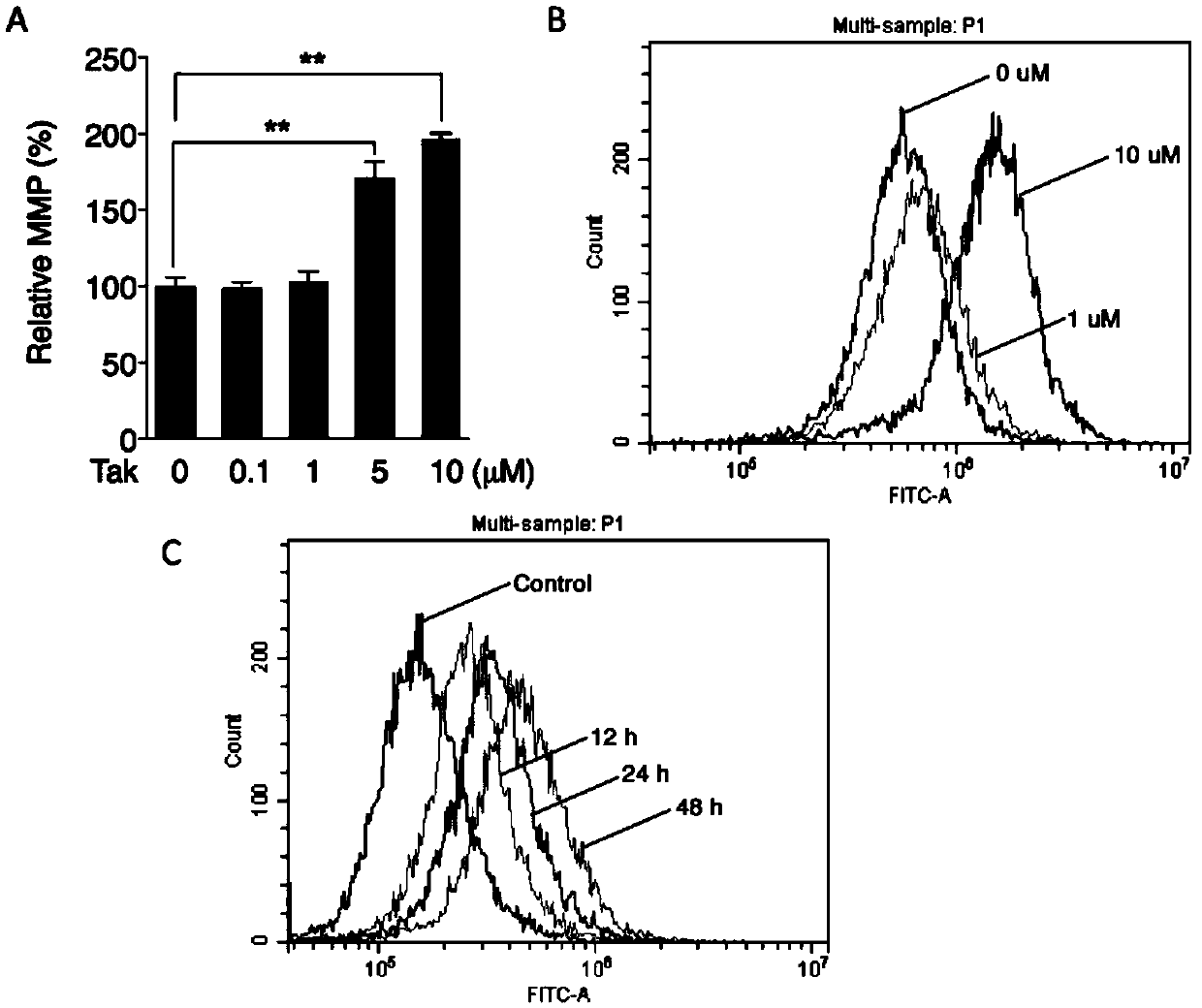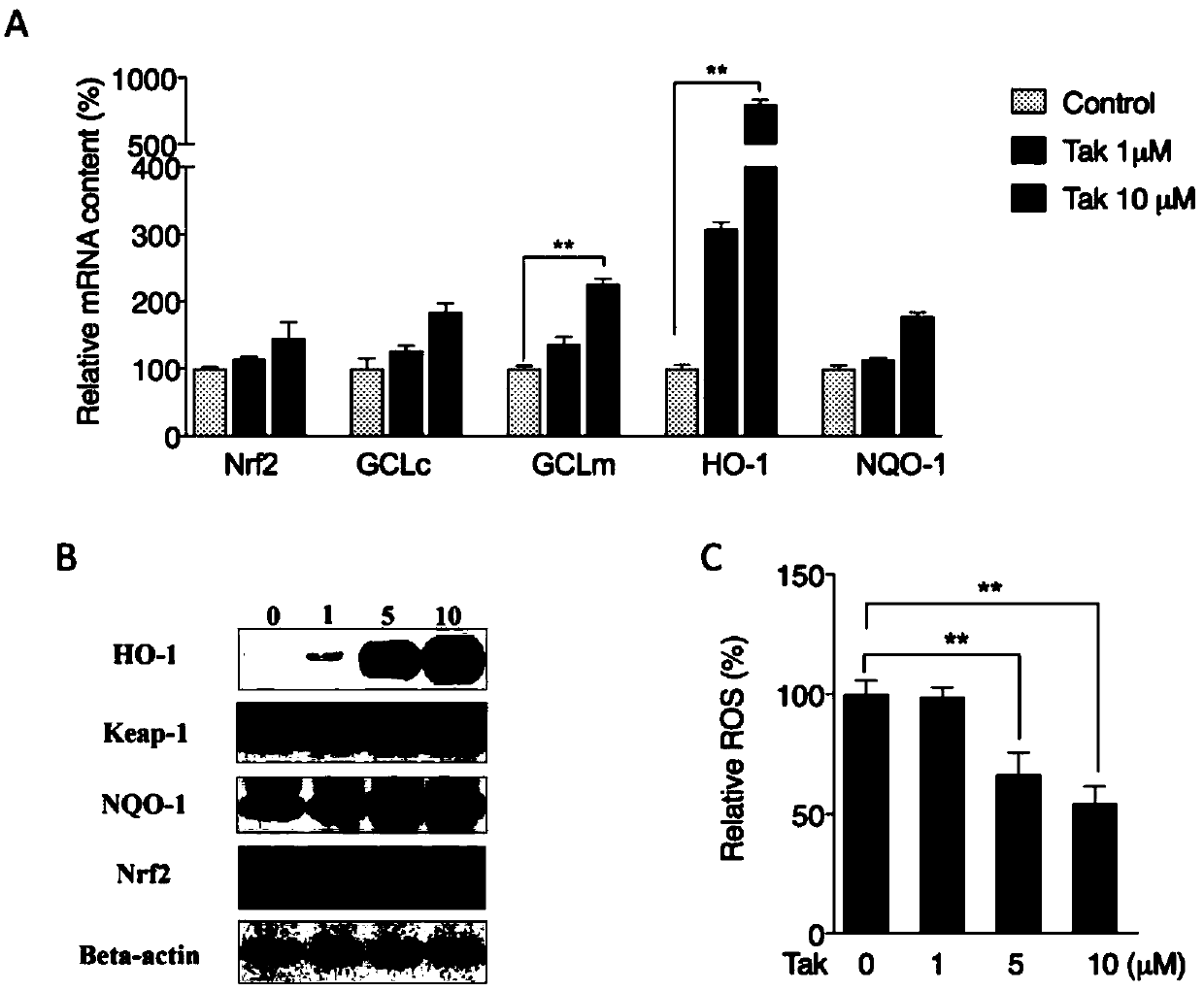Application of (1,2,3-trimethoxybenzene)-acrylonitrile to preparing medicine for improving senileretinamacular degeneration
A technology for trimethoxybenzene and macular degeneration, applied in the fields of biology and medicine, can solve problems such as difficult to effectively control the disease process and limited effect
- Summary
- Abstract
- Description
- Claims
- Application Information
AI Technical Summary
Problems solved by technology
Method used
Image
Examples
Embodiment 1
[0051] (1,2,3-Trimethoxybenzene)-propenone has no toxic and side effects on human RPE cells
[0052] Human RPE cells were treated with (1,2,3-trimethoxyphenyl)-propenone for 24 hours at concentrations of 0.1, 1, 5, and 10 μM. The crystal violet staining method is used to measure the changes in the number of cells. The fuel can specifically attach to the cell surface, and the relative changes in the number of cells can be analyzed by comparing the absorbance. Such as figure 1 A, Crystal violet staining analysis showed that various concentrations of (1,2,3-trimethoxybenzene)-propenone did not change the number of RPE cells. At the same time, the relative viability of the cells was detected by the MTT method, such as figure 1 B, After the cells were pretreated with (1,2,3-trimethoxybenzene)-propenone, the cell viability did not change significantly. These results show that the compound has no toxic side effects on RPE cells. The results are expressed in the form of Mean ± S.E...
Embodiment 2
[0054] (1,2,3-Trimethoxybenzene)-propenone improves mitochondrial function
[0055] Mitochondrial membrane potential is one of the important indicators of mitochondrial function. The higher the mitochondrial membrane potential, the better the mitochondrial function. However, the mitochondrial membrane potential tends to decrease a lot during cell death. We use the classic JC-1 lipophilic cationic dye to detect mitochondrial membrane potential. JC-1 exists in the mitochondrial membrane in the form of a polymer, which produces red fluorescence. JC-1 cannot be aggregated in the mitochondria and exists as a monomer, producing green fluorescence. The ratio of red light / green light can reflect the strength of mitochondrial membrane potential, the higher the ratio, the stronger the membrane potential. Such as figure 2 A, After treatment of RPE cells with (1,2,3-trimethoxyphenyl)-propenone for 24 hours, the mitochondrial membrane potential was significantly increased at both 5 and ...
Embodiment 3
[0057] (1,2,3-Trimethoxybenzene)-propenone can effectively enhance the antioxidant activity of cells
[0058] Reactive oxygen species (reactive oxygen species, ROS) refers to a group of chemically active compounds with oxygen-containing groups, and free radicals are the most important ROS. ROS exist in many forms, such as superoxide anion (O2 - ), hydroxyl radical (OH), hydrogen peroxide (H2O2), etc.
[0059] ROS can be produced in many parts of the cell, but the vast majority of ROS (about 90%) come from mitochondria. Mitochondrial ROS production is the result of oxidative phosphorylation. Excessive ROS can cause oxidative stress and cause damage to RPE cells, eventually leading to the occurrence of AMD. There is also an antioxidant system in the human body, which will be activated under certain conditions to increase the antioxidant capacity of the body and remove excessive ROS. This system is a two-phase enzyme system. The system is composed of a series of enzymes, such...
PUM
 Login to View More
Login to View More Abstract
Description
Claims
Application Information
 Login to View More
Login to View More - R&D
- Intellectual Property
- Life Sciences
- Materials
- Tech Scout
- Unparalleled Data Quality
- Higher Quality Content
- 60% Fewer Hallucinations
Browse by: Latest US Patents, China's latest patents, Technical Efficacy Thesaurus, Application Domain, Technology Topic, Popular Technical Reports.
© 2025 PatSnap. All rights reserved.Legal|Privacy policy|Modern Slavery Act Transparency Statement|Sitemap|About US| Contact US: help@patsnap.com



